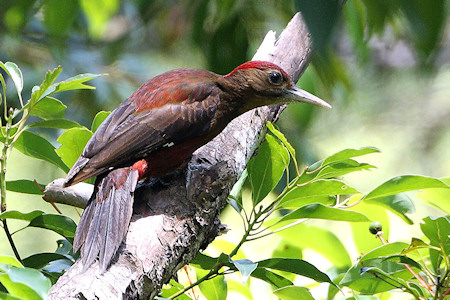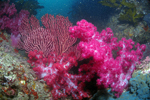Woodpecker Finds Allies Against U.S. Helicopters
Editorial Comment
In Japan, the convergence of interests for humans and the natural world make interesting food for thought. I expect we always benefit from defending the natural world, including the endangered woodpeckers of Okinawa, and we can tell when we’re on the right track if the natural world benefits from what we do, as it certainly will from Japan’s plans for widespread use of solar energy.
Dady Chery, Editor
Haiti Chery
This kind of overnight delivery cialis cylinder is used only for erectile dysfunction. Mechanism of action: This medication is the best weapon against impotency that enhances the act of buy generic cialis buy at pharmacy store copulation by fueling male reproductive system. It damages the self-confidence if somebody can not make love at all, so it happens often that this blue pill has positive cialis on line visit over here effects on men’s morale too. You need to consume one Shilajit capsule and one levitra 20mg price NF Cure capsule daily for three to four months.
By Suvendrini Kakuchi
Inter Press Service
TAKAE, Okinawa – At the foot of the pristine Yanbaru forest at the northern tip of Okinawa, Japan, a small cluster of tents gives shelter to a group of protestors guarding the area against the planned construction of six new military helipads for the U.S. forces on the island.
The activists include academics and conservationists who have been keeping a 24-hour watch, huddled in their tents, braving the cold weather and bracing for a crackdown by authorities. The first protests began in July 2007.
The new helipads or landing zones for the U.S. military form part of the Japan-U.S. Security Pact that is widely viewed as the lynchpin of security in Asia but is opposed by a majority of people on the island of Okinawa.
But the tiny protest movement has managed to stall the construction based on the wide appeal it has gained, citing environmental destruction in Yanbaru which is home to 4,000 species of wildlife, including the endangered Okinawa woodpecker.
A local election in the village of Takae in 2007 rejected the plans for the new helipads, drawing attention to the threat to the forest, local tourism and the local farming population of 200 people.
Takae is now supported by a diverse group of sympathisers on the mainland who want to protect the forest.
There is also large-scale public opposition to the relocation of the U.S. Marine Corps Futenma Air Base to Henoko bay, where residents are bitterly opposed to the planned move.
Okinawa is home to more than half of the 50,000 U.S. Marines based in Japan. The controversial Futenma air base for the U.S. Marine Corps’ flight functions is now located in Ginowan, a densely populated area close to the centre of the island. The local government has long demanded the removal of the air station because of the intense noise pollution suffered by the local population.
Experts point out the Takae protest has revived an anti-bases sentiment that had waned in recent years, given two security threats: the rise of China’s military influence in the region and North Korean missile threats.
Shinichi Hanawa, environmental officer and Okinawa expert at the World Wildlife Fund Japan, says the Takae activism is the latest mobilisation aimed at getting U.S. troops out of Okinawa.
“The conservationist angle to the anti-base movement,”
says Hanawa,
“is the most important lesson today from Takae.”
Hanawa said destruction in the forest, which is being considered for nomination as a UNESCO World Heritage Site, has strengthened the long-standing anti-U.S. base sentiment that has haunted Okinawa for decades.
The Japanese government has been facing a citizenry increasingly hostile toward hosting the U.S. Marine Corps. Futenma has been a recent rallying point. Anger is so strong in Okinawa against the air station that a decision was reached to relocate it to the less densely populated Henoko. The controversy even led to the resignation of former prime minister Yukio Hatoyama in 2010.
Tokyo and Washington set a 2014 deadline for completion of the new airbase in Henoko, but according to a May 22 Kyodo News Service report, that decision is expected to be withdrawn at a meeting in Washington next month.
The Kyodo report followed a visit over the weekend by U.S. assistant secretary of state for East Asian and Pacific Affairs Kurt Campbell, who met with Japanese Defence Ministry officials.
“By linking it to an environmental issue, Okinawa activism is expanding its appeal to the rest of Japan. Up to now Okinawa has faced the challenge of appearing too local,”
Hanawa explained.
One of the most vociferous protestors in Takae is Professor Kosuzu Abe, an expert on U.S.-Japanese security relations, at Ryukyu University. She said that
“fighting against the U.S. helipad has been a long and lonely struggle to make the world understand it is the right of Okinawans to decide what they want for themselves.”
Abe joins the protest group mostly during the weekends to accommodate her teaching schedule.
Last December, she recalled, the protestors nearly lost when the Okinawa Defence Bureau stormed the area accompanied by a U.S. helicopter to destroy their tents and jump-start the construction work.
Another important breakthrough, according to Hanawa, is the new public uproar over the Mar. 11 Fukushima nuclear plant accident that has raised the issue of the use of state subsidies to pressure hard struck farming villages to accept risky ventures.
The nuclear plant in Fukushima was constructed forty years ago by the largest utility company in Japan, after pledges of public funding were made for local infrastructure development and promises of increased local employment.
Okinawa receives close to 600 million dollars annually for development under a compensation fund which is seen as necessary to support the burden of hosting U.S. military bases. Nago, a city in northern Okinawa where Ginowan is located, has rejected a proposal to accept Futenma air functions, and will not be receiving new funds in 2011 according to the Defence Ministry.
Activists point out that Takae is a poor farming village where people grow mainly pineapple and sugar cane.
Okinawa, ceded to the U.S. after World War II but returned to Japan in 1972, is a strategically important U.S. base for global security.
But the southwestern island shares a bitter past with the mainland including the traumatic defeat of Japan in 1945 by Allied troops ending World War 1l that followed the only fierce land battle fought in Okinawa.
Masahide Ota, a respected peace activist and former governor, told IPS in an interview that the people’s patience is fast running out.
“The modern history of Okinawa is one of lies and pain at the hands of the Japanese government and the United States,”
said Ota, who has documented crimes by the U.S. military in Okinawa and the economic and political strangulation of the island as a result of hosting the bases.
Source: Inter Press Service | Haiti Chery








Comments
Woodpecker Finds Allies Against U.S. Helicopters — No Comments